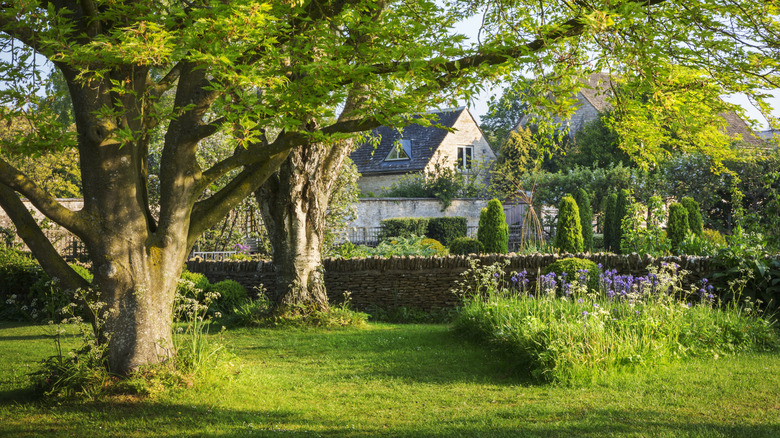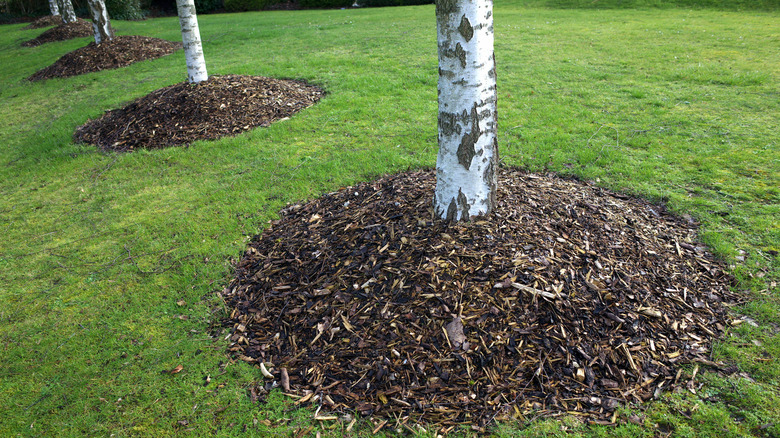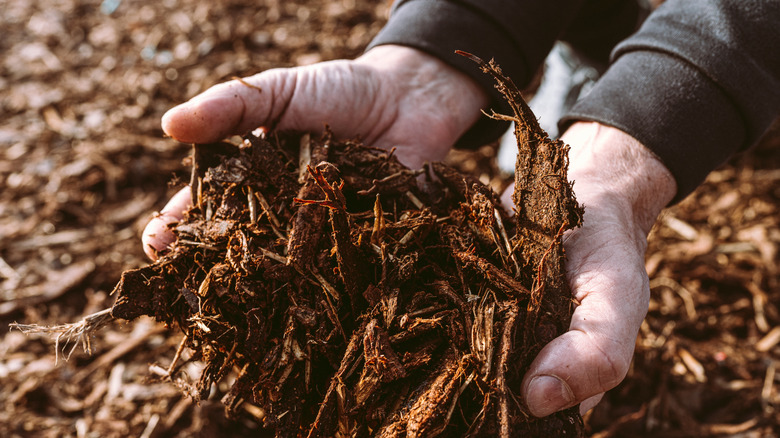The Harmful Practice Taking Over America's Lawns And How To Fix It In Your Yard
When done properly, mulching around trees provides much-needed benefits. It helps to prevent water loss and protects tree roots from temperature extremes. However, the all-too-common practice of volcano mulching, in which pine chips or shredded bark are mounded up into a cone shape around a trunk, can kill trees rather than providing them protection.
Spreading a layer of organic matter around a tree can reduce soil erosion, as well as discourage weeds from growing. Mulch also protects trees from lawn equipment, such as weed trimmers and mowers. The use of a ground covering around landscaping plants is also an aesthetic choice, and this landscaping element can help take your garden from drab to fab. However, when overmulched, that healthy tree you bought is very much at risk.
The downsides of volcano mulching for trees
When mulch is piled around the trunk of the tree, volcano-style, rotting becomes an imminent risk. Disease-causing organisms may come into direct contact with wet tree bark, allowing fungal and bacterial illnesses to flourish. This practice doesn't just increase the risk of disease — it can cause pest damage as well, such as from termites or rodents tunneling through the deep layers of organic material.
There are other unwanted side effects to volcano mulching too. It can cause the tree roots to grow up into the mulch instead of below ground into the soil. And while good mulching techniques can help to conserve soil moisture, a too-thick layer of mulch can prevent water from reaching the tree's roots and deprive them of oxygen. Composting gurus will spot an additional problem for trees with this heavy-handed approach. A deep layer of mulch can essentially become a compost pile, with temperature levels rising as the materials inside the pile decompose, causing the tree to overheat. Despite these words of warning, you should be mulching around your trees — just make sure to do it properly.
The best mulching techniques for healthy trees
Just because you scored free mulch for your yard doesn't mean it will go to waste if you don't pile it up around the bases of your trees. To keep your landscape plantings healthy, spread wood chips or shredded bark out to the width of the tree's branches or drip line rather than mounding it up, and keep the layer just 2 to 4 inches deep. Also, keep the tree's root flare safe by leaving the first 3 to 10 inches of soil bare around the trunk, depending on the tree's size.
For trees that are already mulched volcano-style, that organic matter can be spread out — take away the height, and add to the width, turning the volcano into a bagel shape. Gardeners and landscapers should remember that the drip line will spread outward as the tree grows, so you will need to widen the mulch circle over the years — preferably choosing soil covers that add organic matter to the soil, making them the best types of mulches.


